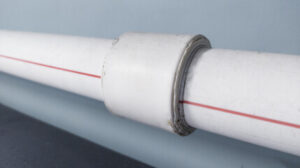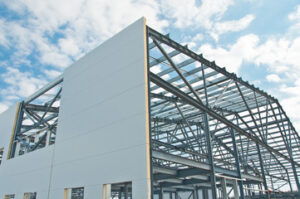Full-service movers will handle everything from packing and loading to transportation and unloading, eliminating much of the hassle and stress that comes with a move. Here’s why it’s worth the investment.

While a mover’s main job is to transport items from one place to another, they also often save homeowners time and energy by doing a lot of the work themselves. For example, moving heavy furniture up and down flights of stairs or through narrow doorways requires more than brute strength—it takes skill and knowledge of how to safely maneuver items. A good mover is trained to assess a space and figure out the best way to get items into it without any damage or injuries. Get in touch with Movers Meridian Idaho for professional support.
Additionally, movers can pack items into boxes more efficiently than most people could on their own. They use high-quality packing materials that protect belongings and minimize the risk of damage or loss during transit, as well as a process that maximizes space inside moving trucks and vans. That means that you’ll have fewer boxes to sort through when unpacking in your new home.
A full-service mover will handle all aspects of your relocation, including packing, loading, and transportation. That saves you a lot of time, money, and physical labor. However, you’ll still need to dedicate time to preparing for your move, updating your address with various services and contacts, and making sure that your belongings are safe in transit.
If you’re on a budget, it might make more sense for you to hire movers only for transportation and leave the packing to yourself. But, if you’re on a tight schedule or dealing with an especially complex move, a full-service company is the best option. That way, you can focus on other important tasks like registering your kids for school or finding a new doctor. And, a professional will ensure that your belongings arrive safely and on time.
Save Money
The cost of movers can be a major expense, but they can also save you money in the long run. Professional movers provide comprehensive services that include labor, transportation and insurance. This convenience comes at a price, however, and it’s important to understand how much you can expect your move to cost before hiring one.
There are a number of ways to save on moving costs, including opting for self-service options, renting a truck or using PODS. Additionally, it’s a good idea to downsize your belongings before the move, as this can make the process less expensive. Lastly, it’s important to choose a reputable moving company with positive online reviews and licensure. This will help ensure the quality of your move and reduce your overall moving costs.
Whether you decide to hire full-service movers or go the DIY route, you’ll need to budget for other expenses associated with your move, such as rental trucks, fuel, lodging and food. It’s also important to consider your timing, as many movers charge more during peak seasons.
Another way to cut costs is by eliminating unnecessary services, such as unpacking or trash removal. You can also save on moving costs by asking family members to pitch in or partnering with other clients for shared load moving, where you split the cost of transporting items with another customer heading in your direction. Finally, it’s important to read any documentation provided by your movers to understand their terms and conditions, delivery window, insurance options and how they handle disputes or claims. By utilizing these tips, you can save on moving costs and enjoy the benefits of a stress-free move. Good luck!
Save Energy
The amount of physical energy required to pack items for a move can take a significant toll. It requires sorting through belongings, decluttering, and packing items carefully to ensure they remain safe and secure during transit. It can also be time-consuming. Packing a three-bedroom home takes an average of 6-10 hours with professional movers. They work efficiently by focusing on one room at a time, packing and arranging belongings in the most appropriate way for maximum efficiency.
Aside from the actual packing, moving takes a considerable amount of energy to load and unload items into a truck or container. This process is made even more difficult by the need to lift and carry heavy boxes or furniture. Moving companies are trained to handle logistics and safeguard belongings, allowing you to focus on other important aspects of your relocation, such as registering children for school or getting settled into your new neighborhood.
When selecting a moving company, ask about their commitment to sustainability and energy efficiency. Some movers offer eco-friendly services such as recycling or reusable packing materials, and some use energy-efficient vehicles to reduce fuel consumption. They may also optimize driving routes to reduce idling time and emissions.
Choosing the right movers will depend on your specific relocation needs, such as whether you require transportation, specialty moves (like pianos or antiques), storage, or disassembly and assembly of large furniture pieces. Research, make phone calls and read reviews to find a reliable moving company that offers the services you need at an affordable price. You’ll be amazed at how much easier and stress-free your move can be when you leave the heavy lifting to professionals.
Save Stress
When you hire movers, they’ll pack and transport all of your belongings to your new home. They know how to move items efficiently and safely, minimizing the chance of damage during transit. They typically work in teams of two or more to maintain speed and quality. In addition, movers use packing materials such as blankets, plastic wrap and custom crating to protect your items. These materials are often much thicker and more durable than the cheap wrapping and cardboard you might find in retail stores.
A reputable moving company can usually complete local moves within a day or two, depending on the size of your household. For larger homes or longer distances, they may need to schedule additional trips. In such cases, movers will let you know beforehand so that you can plan accordingly.
You can save even more time and energy by hiring a full-service moving company. These services include a team that comes to your house, packs everything in boxes and then loads them into their trucks. They also unload your belongings at the new address and assemble furniture. Some movers even offer storage for those who aren’t ready to settle in their new home right away.
If you’re on a budget, you can still reduce the amount of stress and time involved in your move by renting a truck and handling the packing yourself. However, you’ll have to dedicate a lot of time and effort to organizing your belongings, packing supplies and updating your utilities with your new address.
To minimize the cost of your move, you should consider your specific requirements and preferences when choosing between self-service movers, packing and container services and DIY truck rentals. Make sure to declutter, clean your home and remove any items that you don’t want to move. You’ll also need to provide your movers with clear instructions and ensure that pets and children are crated or otherwise out of the way.
Save Energy
Moving is a labor-intensive process, and you may spend more energy on your move than expected. Using energy-efficient techniques, movers can make the most of your moving day to reduce fuel consumption and waste. For example, by efficiently packing items and maximizing space in boxes, movers can minimize the number of trips required and reduce fuel usage. This also reduces idling time, which further reduces fuel consumption and emissions.
In addition, movers use their training to protect your belongings from damage and safely maneuver them down stairs or through narrow doorways. This is especially important for heavy or delicate items, such as large furniture pieces and electronics. When you hire a full-service moving company, they will pack and unpack your belongings at both ends of the move to minimize the amount of time you spend on manual labor.
When movers arrive at your old or new home, they will turn off all appliances and lights to avoid unnecessary energy use. They will then carefully load and secure your belongings in the truck to minimize damage and prevent waste. In the case of long-distance moves, your goods will be shipped in a container, and the movers will take care of packing, loading, and transporting the container to its final destination.








